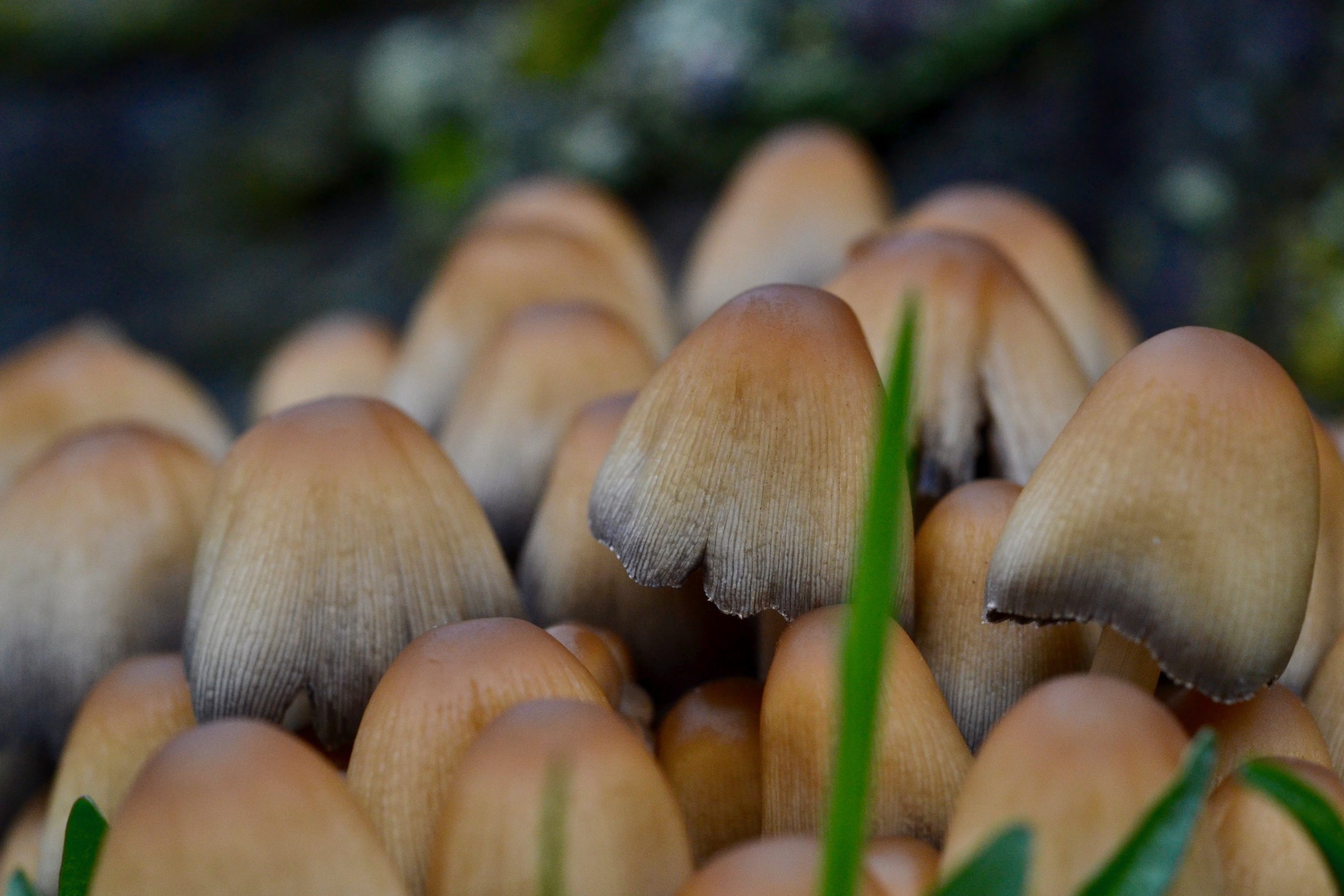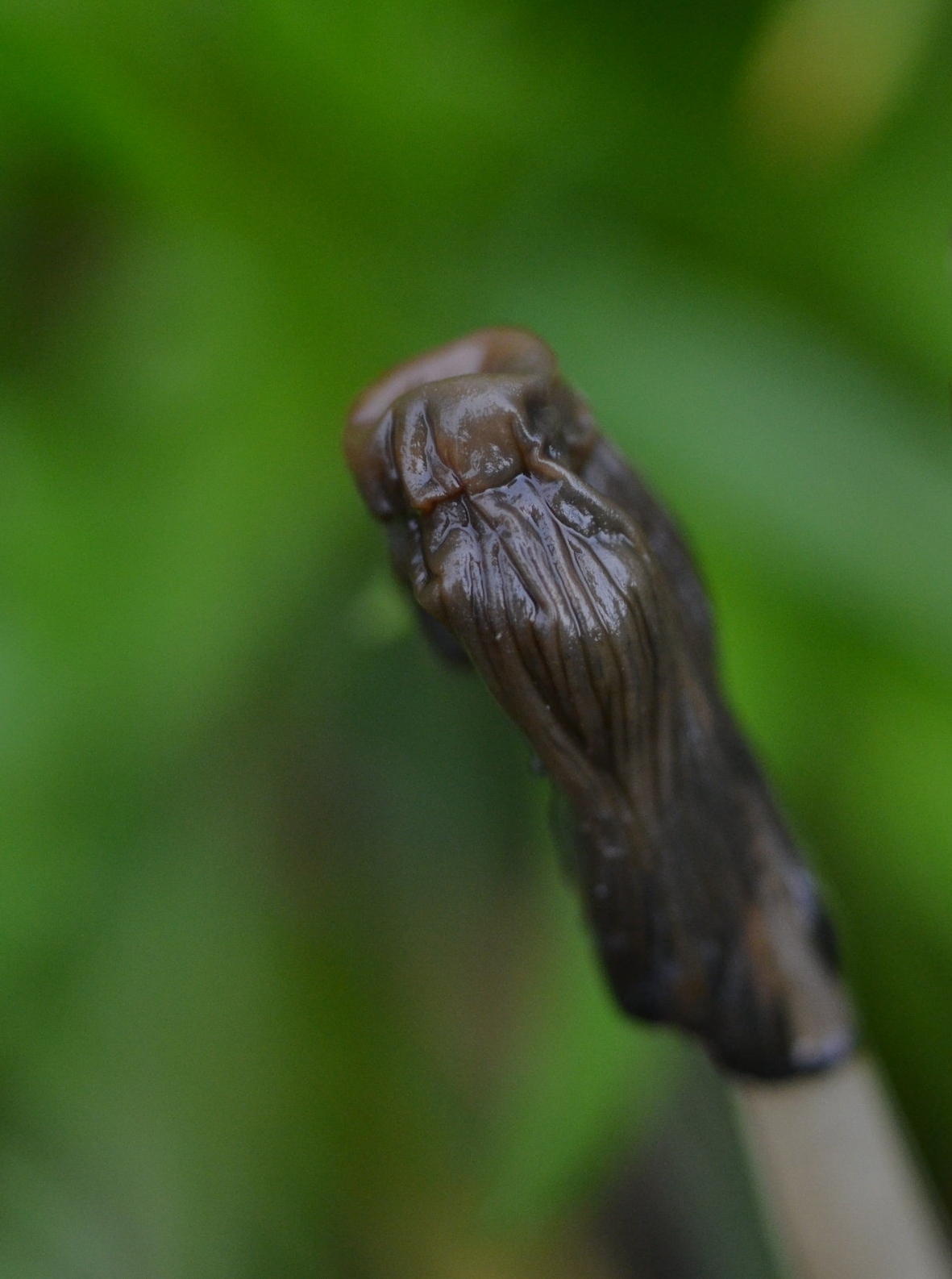I can’t seem to keep my mind off of fungus. Even driving around the city of Buffalo, I look for signs of these forest floor inhabitants. I drive by a stump that used to be a huge oak almost every day. Last fall, as soon as it was cut down honey mushrooms (Armillaria sp.) popped up at its base and all along its roots, stretching nearly 60 meters. These sweet smelling innocuous looking honey mushrooms lay waste to countless trees each year, parasitizing their roots for nutrients. With its root system failing, this mature oak had no chance. So, after a rain and if I’m in the area, I will drive by to see if any fruiting bodies appear. Well today that stump did not disappoint.
I saw bunches of small tan-brown mushrooms all over the base of the stump. I pondered confusingly, because it is not the season for honey mushrooms. I stopped the car, grabbed my camera and excitedly trotted to the stump to investigate. I knew right away these where not honey mushrooms. They were smaller, fragile and had dark gills. Honey’s are a medium-large, sturdy mushroom with white gills. The dead giveaway was that the older fruiting bodies here appeared to be melting. I knew these! I had found a patch of ink caps!
To be exact, I found Coprinellus micaceus also known commonly as the mica cap. The cap surface of young mica caps usually sparkle with shiny granules, but the torrential downpours we’ve received in the past few days washed them away before these pictures were taken. An ink cap is a loose term that composes all fungi that liquefy after cap maturation in a process called deliquescence (my new favorite word). Genetic and morphological studies have separated the ink caps that were once grouped into the family Coprinaceae into two families, the Agaricaceae and the Psathyrellaceae. Not all the fruiting bodies in these families are deliquescent or partake in auto-digestion, which shows that this trait evolved more than once.
Deliquescence of Coprinellus micaceus
So how do these mushrooms seemingly melt into a black puddle of goop? And why? What the fungus is going on?! Well, fungal cell walls are made up of chitin, a modified polysaccharide that gives mushrooms, and insect exoskeletons rigidity. After the Coprinellus micaceus and other deliquescent species release their spores, enzymes called chitinases are released from the vacuoles of senescing gills. These enzymes structurally degrade their caps, as their stipe remains upright, only to support a dripping mess. What’s the benefit of this enzymatic response? Is there any evolutionary significance to deliquescence? The truth is, there doesn’t have to be.
Cap deliquescence of Coprinellus micaceus
In the field of ecology, we always look to describe natural phenomena. There must be an evolutionary significance for everything, right? Wrong. This is a thinking fallacy humans impose on the subject of nature. The overall fitness of the fungus isn’t affected because deliquescence happens after the majority of its spores are released. After successfully discharging potential offspring, these fungi complete its life cycle. The way an organism decomposes is ecologically irrelevant. Whether or not the fungus turns to goop depends on its physiology. Some physiological configurations occur just by chance, and don’t enhance or diminish the organism’s fitness. Fungi in the families Agaricaceae and Psathyrellaceae are not affected by deliquescence. It doesn’t offer a fitness advantage, but it also doesn’t reduce the chance of spores to reach viable substrate which is why this occurred in phylogenetically separate fungi. By chance, these fungi produce chitinases and release them after spore release. Many of us look to understand why some species do what they do, but sometimes, they have evolved random enzymatic responses that doesn’t truly affect them. And sometimes those random enzymatic responses look really cool.




